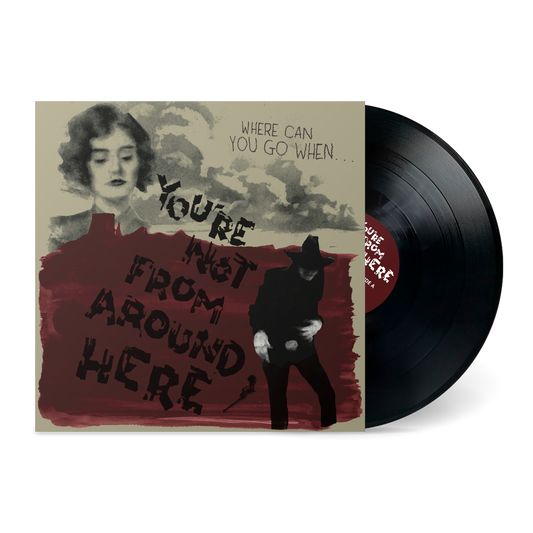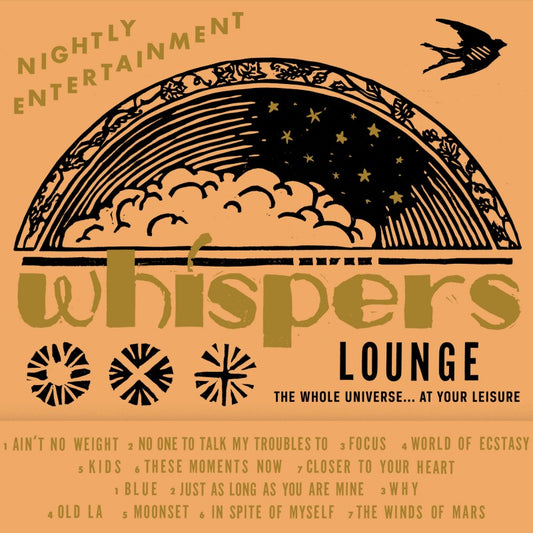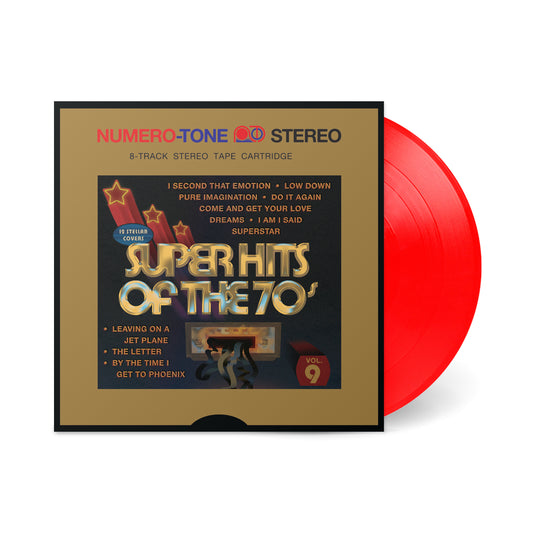For us, taking time to explore the more esoteric possibilities of our creative practice provides a deeper understanding of the resulting piece of work. This curatorial exercise, usually relegated to mix tapes and oddball DJ nights, has allowed us to see the connections between our most far reaching corners.
After years of whittling away at the art of compilation, this part of the practice came to the foreground, and an alternate view began to emerge. The outlines of a context beyond time and place, individual and scene. Threads sewn through the fabric of music history that tell a story primarily concerned with intentionality, psychic connections, and vibe.
To tell these stories an equally symbolic medium is required.
In order to create an object that can emote the value of the like minded yet distant relationships therein we looked to the world of commercial production running parallel to these musical subcultures. The treasure chest of artifacts made during the 20th century’s post-industrial free-for-all may be the only conceptually appropriate talisman for this music, the ability to bring the studio home was after all made by the same mechanism that brought on the consumer gold rush.
The consumer experience embodied by the secondary market, dog eared, footnoted, taken apart and tinkered with. The cabinet is a simulacrum of the lost and found. Our commercially nostalgic spirit-animal, redressed to be a more accurate representation of our emotional experiences with these objects. Less concerned with function than with the memories we associate with them.
The Cabinet of Curiosities is Numero’s tribute to the origin of the DIY museum, with our curatorial focus as always on the heroically home-made, the expanding fan universe, the suburban studio sublime.
To continue exploring the cabinet, click Here

A hero’s quest worth of staccato synths, crack house Casios, off-brand drum machines, minimal Morricone, four-track fantasia, and a variety of other speculations on what the 1980s thought the future would sound like.
Packaged in a 12"x12" Nintendo Entertainment System-styled jacket, replete with game sticker, die-cut outer sleeve, and debossed cartridge inner sleeve.
Escape From Synth City

Static filled signals emanating deep from inside the walls of Laurel Canyon, bouncing off clusters of incipient late century technology, are pulled through the twisted rabbit ears of a Chevy Astro Van. Planisphere. The equivocal sound of hippies fresh from their back-to-land sojourns shuttling drum machines through heartworn aspirations, as if the music section of the Whole Earth Catalog came to life. Let out from astronomy class with an arm full of Brain and Sky label releases, these 9 nomads scribble plein air narrations over a landscape turning its back on the sun. Bask in the reverberations of our celestial home sweet home.
Our Planisphere, for those within the 30-40 degree zone, will provide you with a fairly discernible chart for discovering both deep-sky objects and telluric emotional pulses.
Carl Jansky's Planetary Moment
The previously unissued soundtrack to the 1964 western noir, discovered after 55 years in the Wayne Louis Moody archive. Sixteen languid guitar instrumentals, femme fatale dirges, and cinematic country crooners score the loneliest night of one man’s life. Packaged in a replica of the original octagonal film canister, with 36" x 27" fold out movie poster.


P-Funk and Prince & the Revolution led the world through the last stellar evolutionary stages of soul music as it was transmogrified through the pulverizing lens of the 1980s, when African-American culture gave way to an advanced African-Interplanetary civilization. Self-actualized artists and visionaries followed, reflecting and refracting their own interpretations as if translated by Samuel Delaney or Octavia Butler. This unwieldily titled collection documents ten successful experiments in privately-issued sci-fi soul music, lonely transmissions from a planet in a state of cultural fugue. Packaged in a one-way portal to the further limits of expression. Some assembly required.


A lounge in the Poconos located just inside a Holiday Inn, 1973. The smoky haze clears to reveal a middle-aged couple on a one-foot high stage, prattling on about the weather or Watergate before launching into a serviceable cover of Burt Bacharach’s “Do You Know The Way To San Jose?” Tens of thousands of such combos littered restaurants, cruise ships, casinos, lobbies, and cocktail bars throughout the ’60s and ’70s, but far fewer cut a record worth buying from the stage, much less listening to on the home hi-fi. Gathered here are 14 lounge originals from across the entire easy listening spectrum. A spent matchbook’s worth of crooners, bossa nobodies, seafood jazzers, and Donca-Matic enthusiasts all in search of their ticket out of a red leather booth hell.

The lost yearbook from Louis Wayne Moody High’s graduating class of 1967, chronicling the peaks and valleys of teenage angst, lost loves, and life after summer vacation. Fourteen moody melodies of surf kings, guitar Bettys, talent show psychers, and pre-S.D.S. soft poppers. Walls of jangly guitars, maudlin organs, and melancholy harmonies deliver the bummer to ring in the summer.
A replica of the Louis Wayne Moody High class of 1967 yearbook houses the 150 gram LP. Inside the bound leatherette volume is a murder mystery, told through the scribblings of Moody High’s student body. What happened to Cheryl? Only you can help solve.

As the rift between academic jazz, new age, and pop narrowed in the 1980s, DI.Y. practitioners of metronome driven riffs found new growth in a burgeoning managerial middle class, a commercial audience held captive in dentist offices and waiting rooms across America. Session players took to midi-banks stocked with every instrument imaginable and delivered on a road rage-induced demand to stay cool, relaxed, and focused all at once. The extra-wide cuts packaged here will be mint for years to come.
Go ahead, break the seal on a fresh pack of Nuleafs. There’s only one sensation this smooth.

As escapism from corporate banality turned the corner in the ‘90s, a new generation of vibrant, software generated soundscapes emerged. Communal access to the internet propagated the new hive mind of ideas online, giving way to smoother, stress-free textures. The PC revolution opened the gateway to ray-traced playgrounds of color and light, allowing for visions of utopic proportions to manifest themselves on screensavers far and wide. Boot up your machine, load the software on this floppy diskette, and drop out of a reality bounded by the physical laws of the universe.
Welcome To Numero 95.
The ninth installment in Numero’s Cabinet of Curiosities is 100% chart smashes. Culled from the depths of the private press, Super Hits gathers 12 magical adaptations from the Me Decade’s introspective songbook. Pop this oversized 8-Track into your Fleetwood Weltron and enjoy a motley crew of lounge singers, wedding bands, synth enthusiasts, trailer park dreamers, accountants, gym teachers, and more as they bring their own unique energy to classics by Steely Dan, War, Boz Scaggs, Neil Diamond, John Denver, Smokey Robinson, The Carpenters, Redbone, The Box Tops, Fleetwood Mac, and more. Tape warble not included.
















































